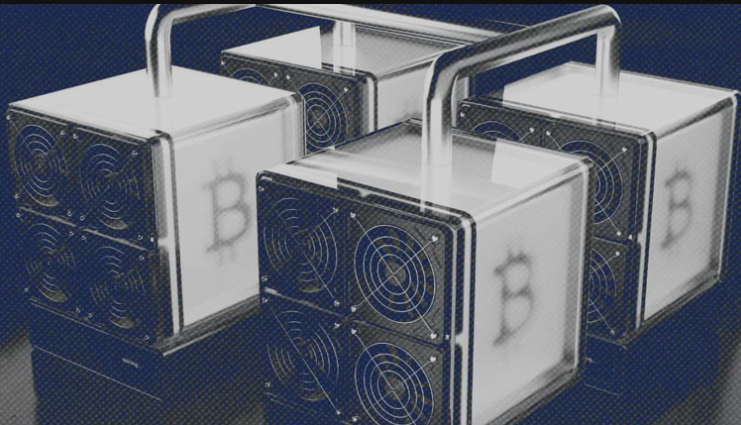Bitcoin miners released their August production updates, revealing a mixed performance across the sector. Many companies reported strategic efforts to optimize their operations amid network challenges and the high demand for electricity, particularly in Texas, where many miners operate.
As miners prepare for the challenges ahead, many are focusing on efficiency, cost control, and strategic investments, while managing the increased difficulty in the Bitcoin network.
Web3 accelerator Outlier Ventures recently said the four-year cycle is dead, with bitcoin experiencing its worst price performance post-halving so far this year. Head of Research Jasper De Maere said 2016 was the last time the halving had a “significant, fundamental impact” on the price of bitcoin — and Bitcoin miners’ block subsidy rewards have since become negligible in the context of a maturing and diversified crypto market.
De Maere sees the strongest case for the halving’s market impact lying in its effect on miners’ treasury management, in addition to reducing bitcoin’s inflation. He explained that, in an extreme scenario where all miners sell their rewards immediately, this would have caused a 1% to 5% market impact before mid-2017, but today, it would account for only 0.17% of trading volume.
The world’s largest cryptocurrency by market capitalization lost 8.7% in value in August. Here’s a look at how the largest miners produced that month:
MARA continues to stay on top
MARA, formerly Marathon Digital, mined 673 BTC in August, a 2% decline from July. However, the company’s hash rate increased by 11% month-over-month, reaching 35.2 EH/s. As of Aug. 31, it held 25,945 BTC, opting not to sell any during the month. CEO Fred Thiel expressed pride in the company’s milestone of mining its 4,000th block, noting continued investments in growing operations.
Earlier in the month, MARA reported a net loss of $199.7 million in its second-quarter earnings, compared to $9 million loss in the same period last year.
Cleanspark mined 478 BTC in August, increasing its total operating hash rate by 1.4 EH/s. The company’s total bitcoin holdings stood at 7,558 as of month-end.
Riot Platforms produced 322 BTC in August, driven by its power strategy to optimize energy costs amidst peak demand on the ERCOT grid. The company now holds over 10,000 BTC. Riot also booked a net loss of $84.4 million in the second quarter, compared to a net loss of $27.4 million in the same period last year.
Bitfarms, which has continued to fend off a takeover from Riot, generated 233 BTC, down 8% from July, despite a 2% increase in its operational hash rate to 11.3 EH/s. The decrease was attributed to higher network difficulty. The company sold 147 BTC, adding 86 BTC to its treasury, which now holds 1,103 BTC worth $65.1 million.
Core Scientific earned 358 BTC from its owned miners, down from 411 BTC in July. As of Aug. 31, the company operated 175,000 bitcoin miners with a total energized hash rate of 25.4 EH/s across both self-mining and hosting operations.
Iris Energy mined 245 BTC in August with an installed capacity of 16 EH/s, an improvement from July’s 222 BTC production.
Best of the rest
TeraWulf mined 184 BTC in August, slightly down from 195 BTC in July. The company’s self-mining capacity hit 10.0 EH/s, a 100% year-over-year increase. CEO Paul Prager noted that demand response events and performance tuning influenced the average operating hash rate of 8.2 EH/s.
Cipher Mining produced 160 BTC in August, down from 178 in July. The company sold 136 BTC, ending the month with 2,284 BTC. CEO Tyler Page emphasized Cipher’s strategic management of operational risks, electricity pricing, and a new 300 MW site acquisition expected to bring their power portfolio to 2.5 GW for bitcoin mining or high-performance computing (HPC) hosting.
Cipher Mining reported a net loss of $15 million for the second quarter while its cash and cash equivalents stood at $122.56 million, a big increase from $86.11 million at the end of 2023.
Hut 8 mined 87 BTC in August and holds 9,105 BTC on its balance sheet. CEO Asher Genoot pointed to low-cost operations and plans to upgrade to next-generation ASICs to optimize returns from its current fleet.
During the month, Needham initiated “buy” ratings on the stocks of Core Scientific and TeraWulf and a “hold” rating on Iris Energy. Analyst John Todaro said Core Scientific has the first-mover advantage in the HPC transition and predicts it will be first to market with a 100MW+ site. Bernstein, meanwhile, rated Riot Platforms, CleanSpark, IREN and Core Scientific as “outperform” and MARA as “market perform.”

